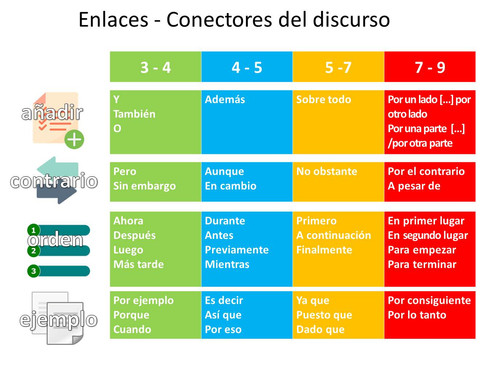Preparation for GCSE Spanish exams
- Spanish Exeter
- Sep 13, 2023
- 4 min read
What should a secondary school student do to learn Spanish, keep up with the pace of the class, and complete tasks independently with the assistance of materials.

In this entry, I'm going to outline four essential aspects that a student should put into practice to succeed in the GCSE Spanish exam. We will explain why it is necessary to have information organized from the first day of class, which will facilitate the student's independent work. This autonomy has positive implications both for progression and motivation within the subject.
1.- Listen to the teacher and make the most of class time.
The hours of Spanish class at school are very valuable. Making the most of this time is, in most cases, the key to ensuring that the student doesn't feel lost and knows what to do when they have to complete a given task. Teachers often repeat the content, provide the necessary tools for completing activities, and help students with questions.
"A good start makes a good ending." This Spanish proverb illustrates the importance of having good communication with the teacher. Unfortunately, many times students start learning languages on the wrong foot and never recover.
To avoid this, it would be advisable to ask the subject teacher directly what can be done to stay up-to-date and not give up at the first hurdle. Most likely, in addition to paying attention in class, the teacher will suggest following the guidelines I will explain below.
2.- Meticulously Organize Grammar Notes.
Similar to the way mathematical formulas are essential for geometry or trigonometry, or those needed to solve physics problems, in Spanish, we require reference notes to generate content. Having a physical space (notebook, folder, notepad, etc.) to quickly, and efficiently, access information is fundamental for our students. My primary recommendation pertains to those common structures that can assist our students in writing correctly in Spanish. In the photos below, I display some examples. In my case, I use regular and versatile structures. They are my favorites!
Over time, with progression in practice, this information will become more complex, richer in details or exceptions, but always following an established order. The student should always know where to access the information they need.

3.- Use Examples of Spanish Sentences: Textbook or Exercise Notebook.
The subject's reference book, copies of short texts, or excerpts from reading books are extremely useful as supporting materials. Undoubtedly, they are patterns that the student can replicate and then use to create their own content. Using this structure as a foundation, the student now modifies the necessary information to adapt it to their personal creation.

Image 1: Text excerpted from the book "¡Viva! AQA GCSE Spanish Higher - Pearson."
Having a pattern paragraph as a base makes it easier to change or modify information than if you only have a list of vocabulary words in Spanish and their equivalent in the student's native language. In the long run, the student will acquire Spanish expression forms rather than literal (and sometimes nonsensical) translations from their own language into Spanish.
Many times, students avoid written expression activities because they don't believe they can write complete sentences in Spanish. In this way, especially in the early stages of learning, we help the student gain confidence and begin to internalize structures that they will use without much difficulty in the medium term.
Despite being apparent at first glance, these two types of supporting materials are often unknown, and in many cases, misused by our students. New technologies offer us very useful tools that we should take advantage of. In my case, I use the digital dictionary WordReference.
4.- Dictionary and Specific Vocabulary.
Despite being apparent at first glance, these two types of supporting materials are often unknown, and in many cases, misused by our students. New technologies offer us very useful tools that we should take advantage of. In my case, I use the digital dictionary WordReference.

Image 2: Example of word search in the digital dictionary WordReference.com
Its usage is entirely free. It can be easily accessed through its mobile app and contains the necessary information for our students. In addition to the various meanings of the same word, it also includes examples of the word in contextualized sentences. I always recommend my students to use it. While I have nothing against other digital translators, I prefer this option because it is more accurate and provides examples that clarify which word should be used depending on the context we find ourselves in.
In addition to the dictionary, I always advise students to have information regarding topic-specific vocabulary at hand. This is where points 1 and 2 mentioned earlier make even more sense, if possible. My favorite documents in this regard are the examples shown in the photos here.
For the writing paper, examples of conjunctions (connectors or linking words) are essential. Additionally, as a complement to grammar examples (usually verb tenses), I always recommend having a list of the main verbs in their infinitive form readily available. Furthermore, for students experienced in this practice, I recommend having a list of the most commonly used adjectives, which will add extra points to their sentences and texts.
Over the course of five years, I have implemented this routine with all my GCSE students. At first, organizing it may seem a bit challenging, but they quickly adapt. In the end, they always appreciate these tips that undoubtedly help them achieve their goals.















Comments